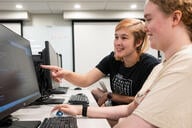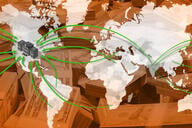You have /5 articles left.
Sign up for a free account or log in.
Attacks directed against students, educators and their institutions appear to be on the rise worldwide, according to a new report from the Global Coalition to Protect Education From Attack, a coalition of education- and human rights-focused organizations.
The report notes that comparisons are difficult across time due to limitations in monitoring and reporting, and raises the possibility that increases in reported incidents could be the result of better monitoring. Still, the authors conclude that the data "strongly suggest" that attacks against education increased in the four-year period covered in the report, 2013 to 2017, compared to the four-year reporting period covered in a previous installment of the report published in 2014.
The authors of the report identified more than 12,700 attacks against educators, students, schools and universities that occurred between 2013 and 2017, collectively harming more than 21,000 students, academics, teachers and other education personnel.
The new report includes profiles of 28 countries that experienced at least 20 attacks on education during the reporting period: Afghanistan, Bangladesh, Burundi, Cameroon, the Central African Republic, Colombia, the Democratic Republic of the Congo, Egypt, Ethiopia, India, Iraq, Israel/Palestine, Kenya, Libya, Mali, Myanmar, Nigeria, Pakistan, the Philippines, Somalia, South Sudan, Sudan, Syria, Thailand, Turkey, Ukraine, Venezuela and Yemen.
The six categories of attack identified in the report, which encompasses education at all levels, not just higher education, are: “physical attacks or threats of attacks on schools,” “physical attacks or threats directed at students, teachers, and other education personnel,” “military use of schools and universities,” “child recruitment at, or en route to or from, school or university,” “sexual violence by armed parties at, or en route to or from, school or university,” and “attacks on higher education.”
Attacks on higher education were identified in 52 countries. The category includes attacks on university facilities as well as assaults that target students, professor or other higher education staff.
Amy Kapit, the lead researcher and writer of the report, said that attacks on higher education facilities included instances in which universities were damaged by bombings, air strikes or fighting that occurred as part of armed conflicts as well as targeted attacks. Some of the largest targeted attacks during the reporting period were the 2015 attack, claimed by the militant group al Shabaab, on Kenya's Garissa University College, which killed at least 142 students; the attack by militants on the American University of Afghanistan in 2015, which killed 15 people, including seven students and one professor; and a Pakistani Taliban-claimed attack on the Agricultural Training Institute in Pakistan in 2017, which reportedly killed at least nine people and injured 37 more, most of them students.
Kapit said that one key trend worldwide at the higher education level “is the violent repression of students and professors and education personnel who are engaged in protest and the use of force to disperse those protests." (This article has been updated to remove a part of a quote that inaccurately referred to the number of countries in which violent repression was found.)
Another trend Kapit noted was the use of universities for military purposes. "There have been some very significant cases of armed groups going in and using university campuses as bases," she said. "The most significant case was the use of Mosul University in Iraq by the Islamic State. A number of campuses in Libya have also been used for military purposes in similar ways. I think people are maybe more familiar with the military use of schools, but universities too are used for military purposes."
The report identifies several trends that contributed to the violence against educational institutions and their students and personnel. These include the rise of extremist armed groups, most significantly those associated with the Islamic State; the use of aerial bombardment to fight armed groups and resulting collateral damage to schools and universities; and the aforementioned violence against students and educators during school and university protests.
The report also identifies a number of reported motivation for attacks, including attacks by nonstate armed groups looking to delegitimize the government (educational institutions being “one of the most visible symbols of state authority”), objections on the part of armed groups to the content of the curriculum or the values being taught, including objections to the education of women and girls; and the use of schools for military purposes or for polling locations.
The authors of the report identified attacks on education in 74 countries, including the 28 countries profiled. Forty-one countries experienced at least five attacks, including one that was intentional or deadly, during the reporting period -- up from 30 countries in the 2014 version of the report.
The authors make a number of recommendations, including adoption of the Safe Schools Declaration, which the report describes as "perhaps the most visible representation of a global consensus that education should be protected from attacks and military use." Seventy-four countries, not including the U.S., have endorsed the declaration, in which states commit to a series of actions, including the adoption of common guidelines on protecting schools and universities from military use during armed conflict and a commitment to collecting data and investigating alleged attacks and prosecuting alleged perpetrators when appropriate.
The coalition has also released a series of principles for states on how to protect higher education institutions in particular from attack.




